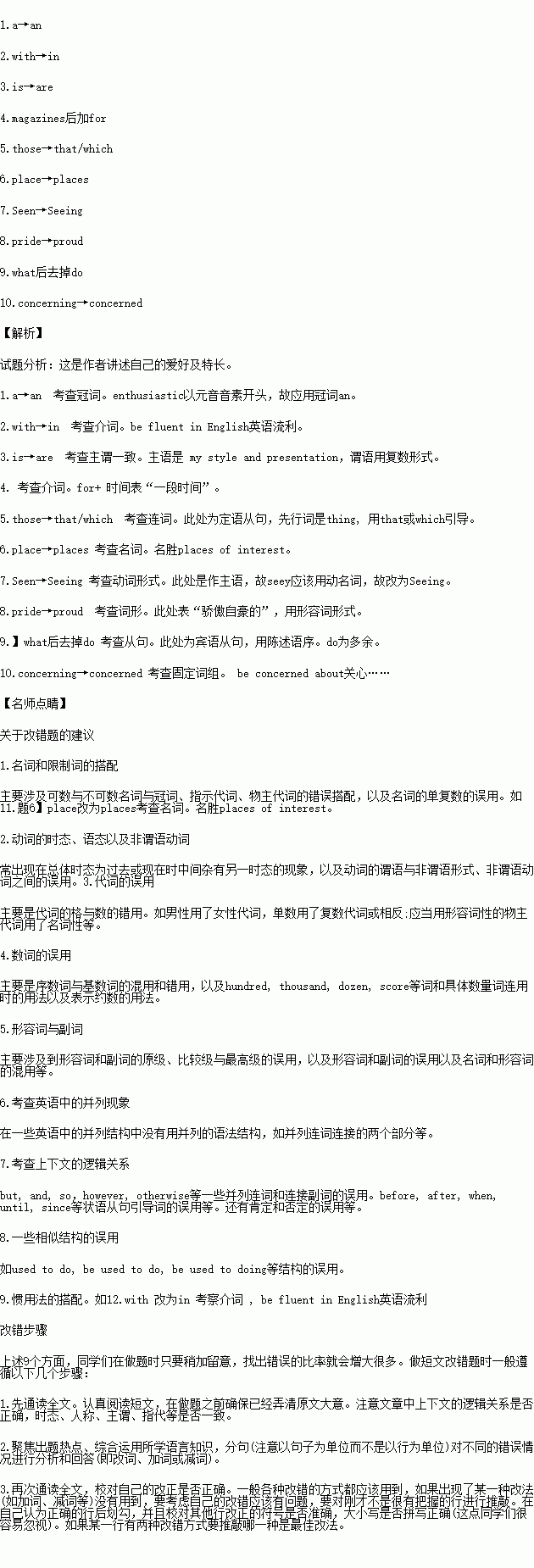题目内容
短文改错
此题要求改正所给短文中的错误。短文中有10处错误,每句最多有两处。
错误涉及一个单词的增加、删改或修改。
增加:在缺词处加一个漏词符号( ),并在此符号下面写出该加的词。
),并在此符号下面写出该加的词。
删除:把多余的词用斜线(﹨)划掉
修改:在错的词下划一横线,并在该词下面写出修改后的词。
注意:1、每处错误及修改均仅限一词。
2、只允许修改10处,多者(从第11处起)不计分。
I am a enthusiastic and fun-loving student. My favorite subject is English. I am pretty fluent with English, and my teachers say my style and presentation is good. My first love is writing, and I have been writing for some magazines about three years. Mostly I like to write about things those are happening in the school, like sports events, trips to place of interest, and tips on how to study effectively. Seen my words in print makes me extremely pride. I also enjoy communicating with other people to find out what do they think. I am always interested in what others are concerning about, from student worries, local news, to world events.
 夺冠金卷全能练考系列答案
夺冠金卷全能练考系列答案
